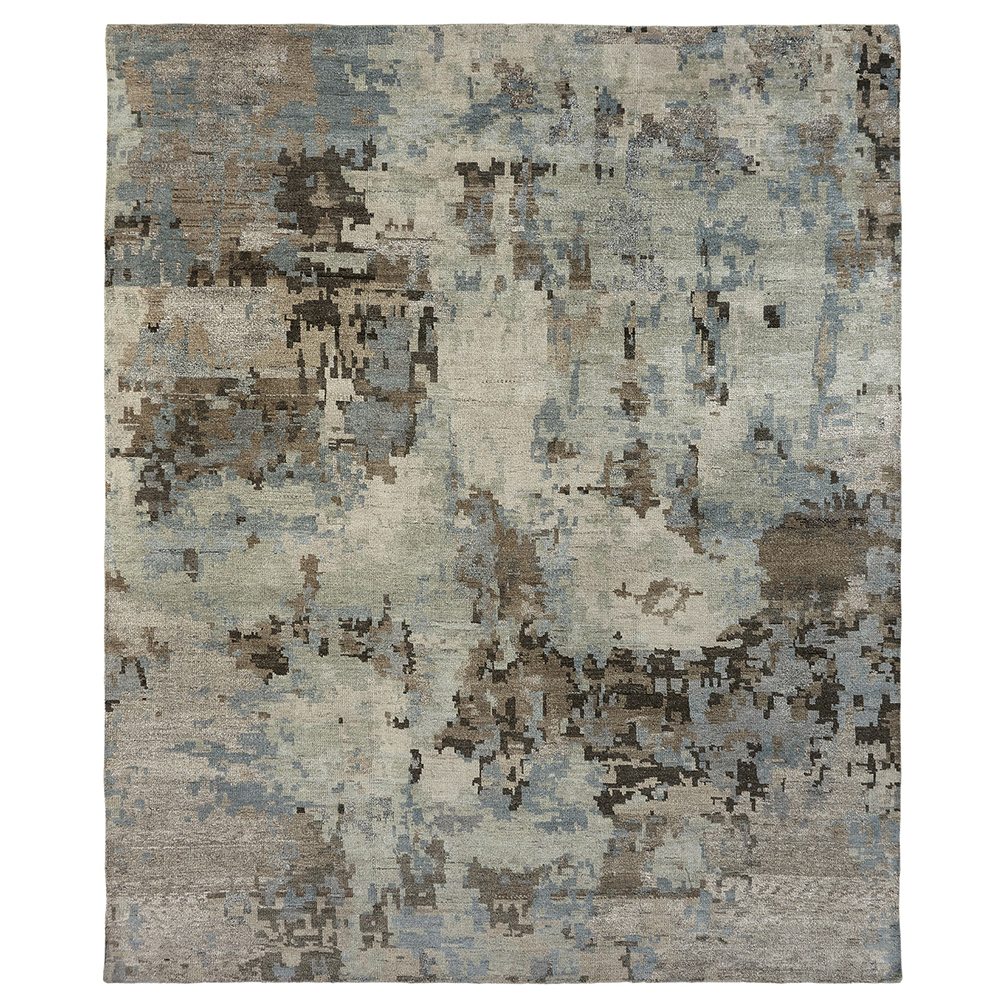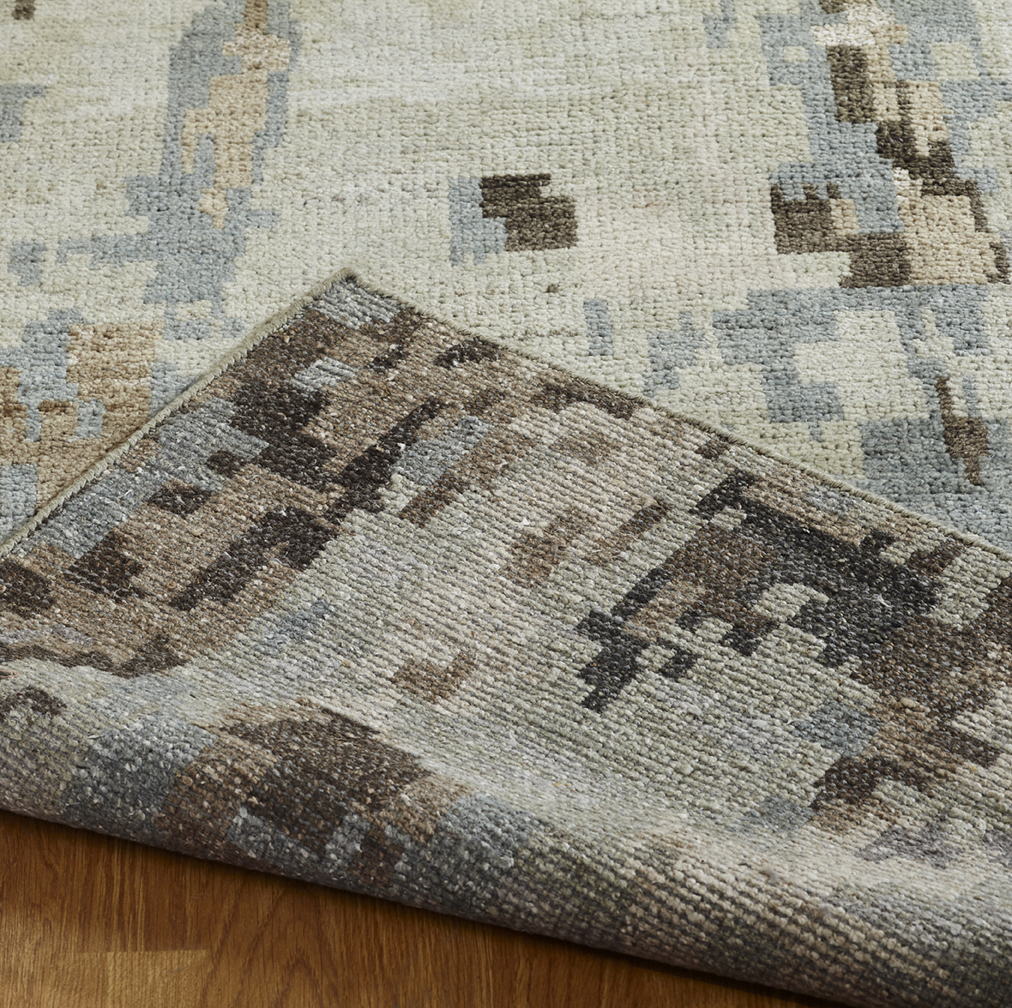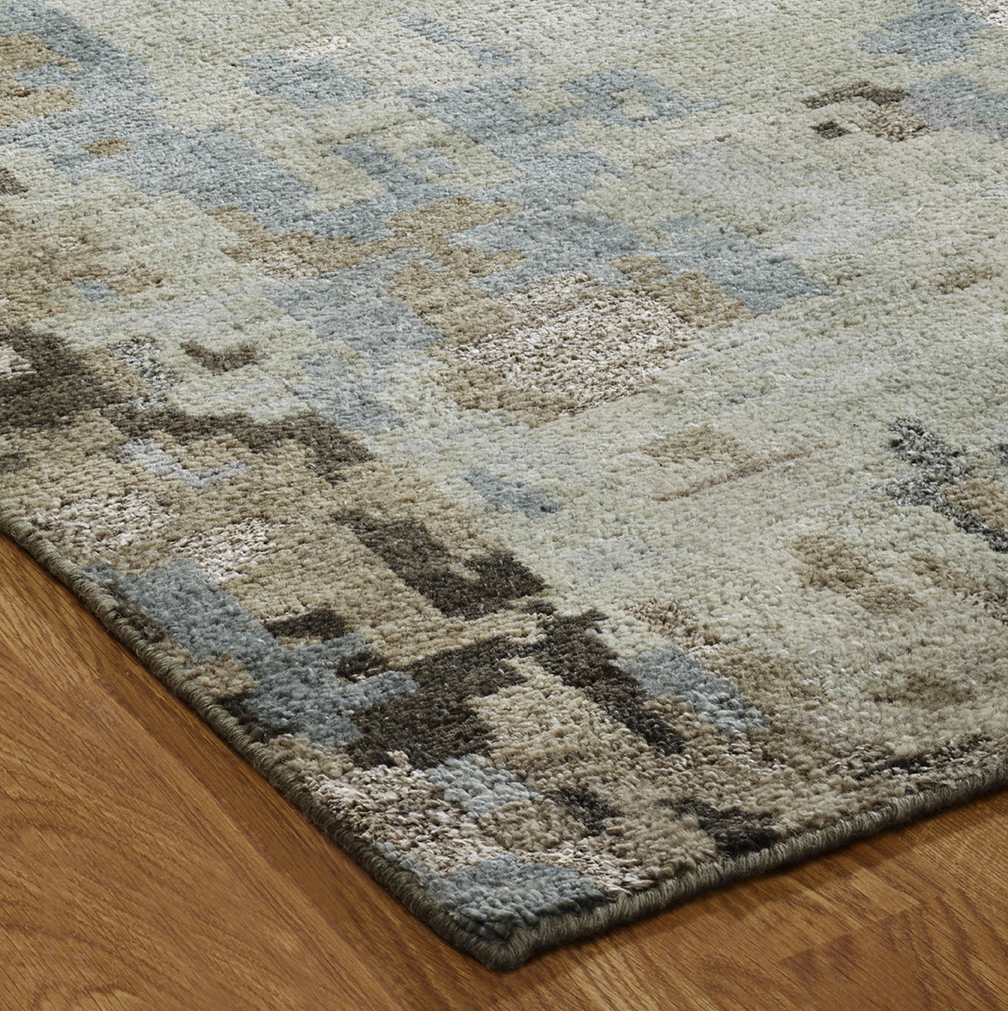Using a combination of premium hand-spun wool and silkette, this beautiful area rug is meticulously hand-knotted in a Turkish knot weave. The abstract design has the look and feel of an artisanal contemporary masterpiece.
Hand-knotted
Premium Hand-spun Wool and Silkette
Made in India











